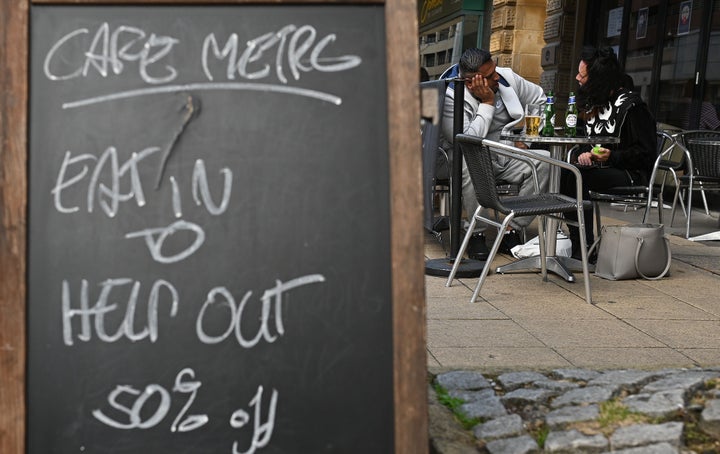
It seems like life really is back to normal here in South London. The pubs are full and the traffic is back to pre-lockdown levels – the two miles on the bus to work is back to its usual 40 minutes.
The local Italian restaurant I’m working at this summer has made many changes over the course of this pandemic. Our new deli counter, selling produce direct from supplier to customer, allowed the business to stay open while the kitchen was closed. There is also a lot less Italian being spoken – my colleague and I, both hired after lockdown, are the first non-Italians to work in the restaurant. Brexit had already made hiring immigrants complicated, but the pandemic caused many more to return to their families in Italy.
The restaurant has had no lack of customers since reopening last month. Many regulars have begun showing their faces, and our tables are fully booked over a week in advance. In this respect, we have been supported by our community – and it is this swift offloading of cash into our till that the government has hailed a success.
More worrying to me, however, is the number of things that have stayed the same.
While diners may be desperate to throw their money at bruschetta and parma ham, they are apparently reluctant to invest in face masks or any other protective wear. In the last month, I can think of only one person who has worn a mask when walking through the restaurant to the bathroom.
“It feels like customers are far more concerned with rebuilding their social lives than with observing safe social distancing.”
It feels like customers are far more concerned with rebuilding their social lives than with observing safe social distancing, but we staff members can do little to encourage different behaviour; we need their custom, and we need to get paid. Furthermore, our restaurant is in a narrow, old building where 1.5metre spacing is just not possible. It is telling, though, that nobody has complained.
On Saturdays and Sundays, the road outside is closed to traffic, which allows us to set up tables outside. The first weekend we tried this, the street attracted festival-like crowds. By early evening, drinkers who could not get into the bars were sprawled out on the pavements, all worries of coronavirus swirling, with their vomit, into the drains.
Rowdy crowds have been partially controlled by increasing amounts of new fencing. Chain restaurants near us have created elaborate one-way systems and stitched their borders into the street with branded barriers. In the weekly council reports, we have received low marks for not following their ‘excellent’ example; instead, our outdoor set-up has been judged ‘disorganised’. My manager, reading the report, sighed that we do not have the money to buy ropes and posts, let alone fencing. We will just have to live with the inspectors’ disapproval.
August saw the introduction of another scheme designed to help restaurants: Eat Out To Help Out. But, like many small restaurants, we are closed on Mondays, and so we cannot make the most of this scheme. For us, the benefit of the scheme was not worth the cost of staffing an extra day.
It was also hoped that the scheme, in operation from Monday to Wednesday, would incentivise customers to eat out on days they normally wouldn’t, thus aiding with social distancing. This has not happened. In the first week of the scheme, Thursday to Sunday were still busiest by far, while Tuesday and Wednesday remained relatively quiet.
“Restaurants can alter table arrangements and wipe down menus every ten minutes, but ultimately, it is individuals’ behaviour that needs to change.”
Because chain and independent businesses alike can benefit from the scheme, the relative inequality in our industry remains the same. Local restaurants like mine have been affected disproportionately by the pandemic – it is more difficult for small businesses to switch supply chains when the established ones are disrupted, and the processes involved in applying for funds and grants have proved prohibitively bureaucratic.
But the Eat Out To Help Out scheme will do nothing to offer us the disproportionate help we need to stay on our feet. In the event of a second lockdown, my manager tells me we wouldn’t survive into 2021 – a reality that hardly seems believable when I look out over a restaurant full, every weekend, to capacity.
Small restaurants would rather Rishi Sunak had offered a rent abatement for restaurants, instead of a discount for customers. But that, perhaps, would not have made him so popular with the public.
Restaurant work is deemed ‘non-essential’, and we staff, sweltering under facemasks while customers breathe freely, aren’t receiving any kind of hero treatment. And yet, the hordes of customers jostling for a table, the phone ringing constantly for bookings, and the willingness to discard social distancing for a plate of homemade ravioli says otherwise.
The truth is that restaurants can alter table arrangements and wipe down menus every ten minutes, but ultimately, it is individuals’ behaviour that needs to change.
So, life is back to normal – for customers at least. The uncomfortable future of plastic pods and having your food delivered on a robotic trolley has not yet arrived, and all that you have to do to prove yourself a patriot during this difficult time is eat, eat and drink.
Faye Saulsbury is a student and freelance writer
Have a compelling personal story you want to tell? Find out what we’re looking for here, and pitch us on ukpersonal@huffpost.com
